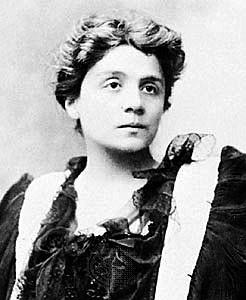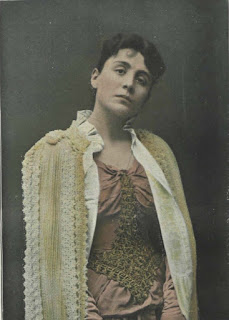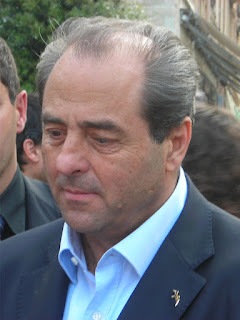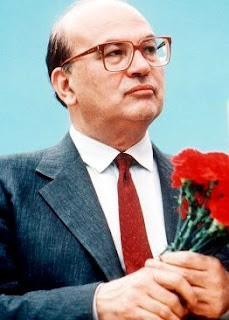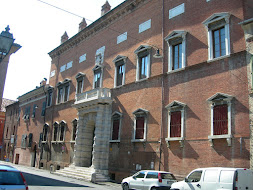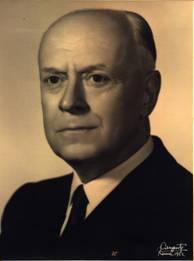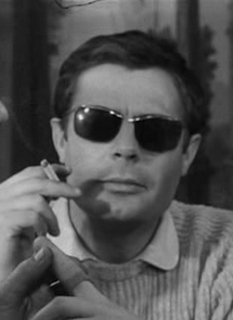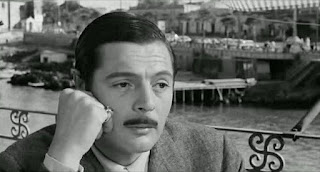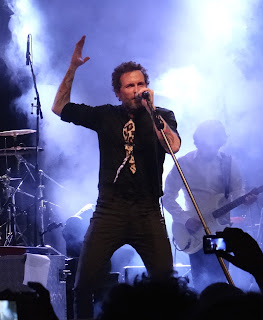Scientist from Rome who created world’s first nuclear
reactor
 |
Enrico Fermi discovered how splitting uranium
atoms could generate vast amounts of energy |
Enrico Fermi, who has been called the architect of the
nuclear age and even the father of the atomic bomb, was born on this day in
1901 in Rome.
Fermi, who won a Nobel Prize in 1938, created the world’s
first nuclear reactor, the so-called Chicago Pile-1, after he had settled in
the United States, and also worked on the Manhattan Project, which was the code
name for the secret US research project aimed at developing nuclear weapons in
the Second World War.
The third child of Alberto Fermi, an official in Italy’s
Ministry of Railways, and Ida de Gattis, a school teacher, Fermi took an
interest in science from an early age, inspired by a book about physics he had
discovered in the local market in Campo de’ Fiori in Rome, written in Latin by
a Jesuit priest in about 1840.
He read avidly as he was growing up, conducting many
experiments. After high school, he was granted a place at the prestigious Scuola
Normale Superiore, part of the University of Pisa, where it became clear the
depth of knowledge he had already acquired was greater than that of many of his
professors. It was not long before they began asking him to organise seminars
in quantum physics. He graduated with honours in 1922.
After spending several months in Germany and Holland on scholarships,
working alongside renowned professors such as Max Born and Paul Ehrenfest, he returned to Italy
to take up a lectureship at the University of Florence. In 1927 he was appointed
Professor of Theoretical Physics at the University of Rome.
 |
Fermi (centre), with his fellow scientists at the University of
Pisa, Franco Rasetti and Emilio Segrè |
In the same year, he married Laura Capon, who came from a
respected Jewish family in Rome. They
would soon have two children, Giulio and Nella.
In 1934, Fermi began working with the atom, the area of
physics that would define his life. He discovered that nuclear transformation
could occur in nearly every element.
One of the elements whose atoms he split was uranium. This
led to discovery of slow neutrons, which in turn led to nuclear fission and the
production of new elements.
When, in 1938, Fermi was awarded the Nobel Prize in Physics
"for his work with artificial radioactivity produced by neutrons, and for
nuclear reactions brought about by slow neutrons”, it could not have come at a
more timely moment.
Benito Mussolini, whose Fascist party Fermi had joined when
he was made a member of the Royal Academy of Italy in 1929, had introduced
tough new race laws in his support for the German leader Adolf Hitler. The anti-Jewish
element of these laws threatened Fermi’s family and he became desperate to
leave Italy.
 |
The eerie mushroom cloud formed by the
first test explosion of an atomic bomb |
Strict travel restrictions were being implemented, too, but
Mussolini wanted Fermi to receive his Nobel award in person at the ceremony in Sweden
and allowed him to travel with his family. Once in Stockholm, they made
arrangements to escape to America.
Thus Fermi, his wife and their children disembarked a
passenger liner in New York in January 1939.
He quickly settled into an academic career in American universities.
Fermi was appointed professor of physics at New York's
Columbia University, where he discovered that if uranium neutrons were emitted
into fissioning uranium, they could split other uranium atoms, setting off a
chain reaction that would release enormous amounts of energy. His experiments
led to the first controlled nuclear chain reaction, which he prosaically
christened Chicago Pile-1, on December 2, 1942, under Chicago University's
athletic stadium.
During the Second World War, Fermi was invited to join the
Manhattan Project, which focused on the development of the atomic bomb. Worried
that scientists in Germany were close to developing their own bomb, Fermi and
other scientists encouraged the US Government to invest in the project without
delay.
He witnessed the first test detonation of a nuclear weapon,
codenamed Trinity, in a remote area of desert in New Mexico on July 16,
1945. He advised the US Government on
target selection, recommending the bomb be used without warning against an
industrial area.
 |
General Leslie R Groves presents Fermi with his
Medal of Merit for wartime service to the US |
After the war, Enrico Fermi was appointed to the General
Advisory Committee for the Atomic Energy Commission. In October 1949, the
commission met to discuss the development of the hydrogen bomb, a weapon 500
times more powerful than the atomic bombs dropped on Hiroshima and Nagasaki in Japan,
which themselves killed 129,000 people.
Fermi was appalled at the prospect, however, opposing it on both
technical and moral grounds.
In 1944, Fermi and his wife had become American citizens,
and at the end of the war he accepted a professorship at the University of
Chicago's Institute for Nuclear Studies, a position which he held until his death.
There he turned his attention to high-energy physics, and led investigations
into the pion-nucleon interaction.
He died in 1954 at the age of only 53 from stomach cancer.
It is thought likely now that he developed the disease as a result of his
exposure to radiation, possibly when he witnessed the Trinity explosion, when
he reported feeling the heat from the blast, or from his work creating the
Chicago reactor.
He confessed to friends during his life that he was aware
that he might be at risk but considered scientific advancement more important
than his own long-term health.
As well as his Nobel prize, Fermi won many other awards for
his research, while others granted to modern scientists bear his name. Among other things named after him are the Fermilab
particle accelerator and physics lab in Batavia, Illinois and the Fermi
Gamma-ray Space Telescope. Three nuclear
reactor installations have been named after him: the Fermi 1 and Fermi 2
nuclear power plants in Newport, Michigan, the Enrico Fermi Nuclear Power Plant
at Trino Vercellese in Italy, and the RA-1 Enrico Fermi research reactor in
Argentina.
A synthetic element isolated from the debris of the 1952 Ivy
Mike nuclear test was named fermium, in honour of Fermi's contributions to the
scientific community.
The Basilica of Santa Croce in Florence, known as the Temple
of Italian Glories for its many graves of artists, scientists and prominent
figures in Italian history, has a plaque commemorating Fermi.
 |
| Fermi's birthplace in Via Gaeta in Rome |
Travel tip:
Fermi’s birthplace in Rome was in Via Gaeta, not far from
the Termini railway station, and the house is marked with a plaque. The area
around Via Gaeta has nothing in particular to recommend it but nearby are the
ruins of the Terme di Diocleziano – the Baths of Diocletian – a Roman bathing
complex that covered 13 acres and could accommodate up to 3,000 people. The
complex today houses one of the four sites of the Museo Nazionale Romana,
containing a fascinating collection of objects and artefacts to help visitors
build a picture of Roman life in the days of the empire. Also worth visiting at
the site is a large and peaceful cloister built from designs by Michelangelo.
 |
| The magnificent Basilica of Santa Croce in Florence |
Travel tip:
The Basilica of Santa Croce, with its 16 chapels, is the
largest Franciscan church in the world, and has been one of Florence’s most
impressive buildings since it was completed towards the end of the 14th
century. Inside can be found work by many of the great artists of the
Renaissance, including Giotto, Cimabue, Donatello, Antonio Canova and Domenico
Veneziano. The Basilica is also notable as the burial place of a host of illustrious
Italians, such as Michelangelo, Galileo, Machiavelli, the poet Ugo Foscolo, the
philosopher Giovanni Gentile and the composer Rossini.
